“Back in MY day” missionary edition
I was one of the sister missionaries who went out within a year of President Monson’s historic 2012 announcement. You know, the one where the age of missionary service was lowered to 18 for young men and 19 for young women? Kind of hard to forget. Serving as a missionary at that time, I am no stranger to change.
I served from August 2013 to February 2015 in the Texas Houston Mission, and in that time I saw a lot of change. Sister missionaries were called as Sister Training Leaders (STLs), the Church initiated the 12-week training program, and not to mention the number of sisters serving went way up. During the peak of the wave, my mission was half-and-half elders and sisters (though I realize this was not the norm in every area).
I have been back from my mission for almost four years, but in that time I have seen some major changes. Between reading my younger sister’s mission letters and research I have conducted on my own, here are some of the biggest changes I have seen in missionary work.
1. Dress Code

Um, sister missionaries can wear pants now? What? I rode a bike for six months and I would have loved to wear pants. Since 2016, sister missionaries in areas with a high risk of mosquito-borne illnesses have been permitted to wear pants as a form of protection, but as of December 2018, that option is now available for all sister missionaries.
Sister missionaries will still wear skirts or dresses “when attending the temple and during Sunday worship services, leadership and zone conferences, baptismal services, and missionary training center devotionals,” according to this change. They also still have the option to wear dresses or skirts whenever they like, so don’t burn the skirts yet sisters. But still, sister missionaries wearing pants? This is awesome!
2. Cell Phones

There are so many technology changes that I have to break them up into different sections. But let’s talk about cell phones for a minute. In my mission, we had cool slide phones with a full keyboard. I felt like we were the coolest. But let’s be real, that phone did not even understand emojis. If we received a message with an emoji, the message was just blank. In my husband’s mission in Brazil, their phones only held phone numbers. It wasn’t until it became affordable that they were allowed to use their phones to call people.
Now (in some missions) missionaries have smartphones! Like, what? Think of all of the messages they will now be able to receive, the videos they will be able to show! I would have loved to show people a Christmas or Bible video at the doorstep or in a home. So many opportunities.
3. Tablets
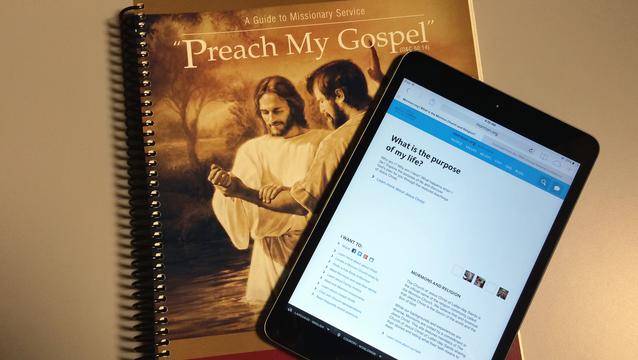
So this one is really similar to smartphones because, honestly, they are practically the same thing nowadays. But something I want to highlight is the area book app. An app for the area book.
No more giant three-ring binder. No more forgetting what happened in the lesson when you go to update it at night. You can have a list of potential investigators at your fingertips. This is amazing! I rode a bike as a missionary for six months and there was no way we could have carried our area book around with us every day.
I should mention one thing. This amazing piece of technology only works when people remember to use it. My sister (who had access to this amazing piece of technology) said she often forgot to update things as they happened. So I guess you have to take this change with a grain of salt. The technology has changed, not people.
4. Social Media
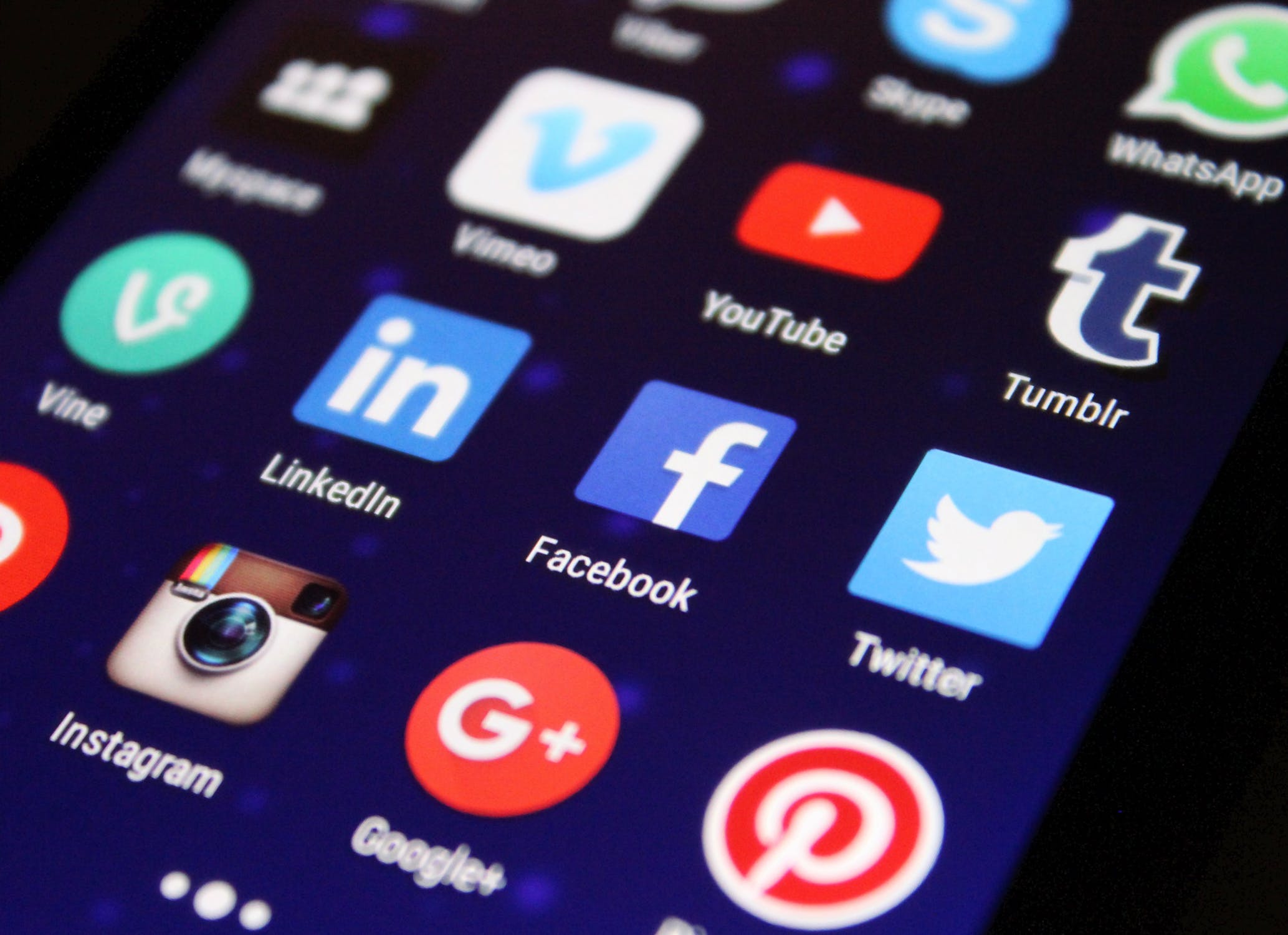
Even without access to tablets, there are areas where the missionaries are being encouraged to use social media to spread the gospel. They post content about Jesus Christ and encourage their friends and family to share the gospel. Visitor center missionaries use social media to talk to people who have expressed interest in the Church through comeuntochrist.org and other sites.
5. Daily Schedule
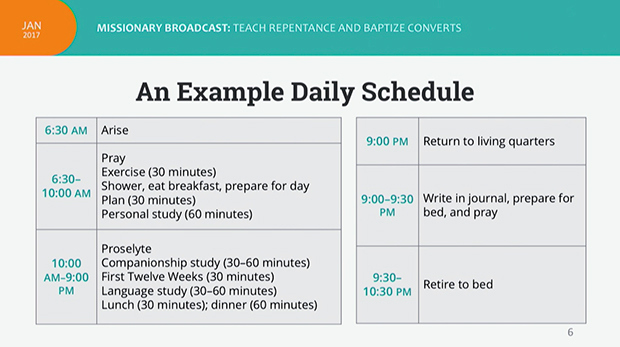
In early 2017, the daily schedule for missionaries was changed. For me, it was wake up at 6:30 am, exercise (I was fond of “stretching”) for 30 minutes, eat, shower, then have personal study for an hour and companion study for 30–60 minutes, and be out the door by 10 am. As a new missionary participating in the 12-week course, we studied that for 30 minutes and then left by 9:30. When we returned home at 9 pm, we then did our planning for the next and went to bed by 10:30 pm.
Now the schedule has changed.
Missionaries still get up at 6:30, but daily planning has replaced companionship study in the morning. Companionship study, training, and language study can now take place anytime during the day. But this isn’t the only thing that has changed. Missionaries are now able to adjust their schedule to fit local and cultural needs. So if the culture is to sleep late, missionaries can get up later and stay out later. If they need to be in before dark, the missionaries can leave earlier.
This would have been so useful in my mission. During the summer in Houston, it is SO hot. No one goes out in the middle of the day if they can help it. it would have been nice to have the option to escape the heat of the middle of the day and study rather than get heat stroke.
6. Key Indicators
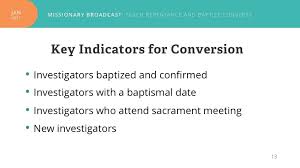
In the same broadcast where the missionary daily schedule changed, the Brethren also changed the key indicators used by missionaries.
On my mission, our key indicators were as follows:
- investigators baptized and confirmed
- investigators with a baptism date
- investigators who attended sacrament meeting
- lessons taught with a member present
- other lessons taught
- progressing investigators
- referrals
- lessons taught to recent converts and less-active members
- new investigators
These key indicators gave us a focus for our missionary work. It showed us where we should be spending our time. From time to time my mission president would also add a key indicator to bring us greater focus.
With the 2017 change, the number of key indicators has gone down to four:
- People baptized and confirmed
- People with a baptismal date
- People who attended sacrament meeting
- New people being taught
This is in line with the Church’s desire to focus on bringing people to Christ, not just numbers. These key indicators refocus the missionaries. The whole purpose of the broadcast in which these changes were made (of which the changes were a small part), was to refocus the missionaries on their purpose, which is teaching repentance and bring people to baptism.
7. Support for Missionaries with Mental and Physical Health Challenges
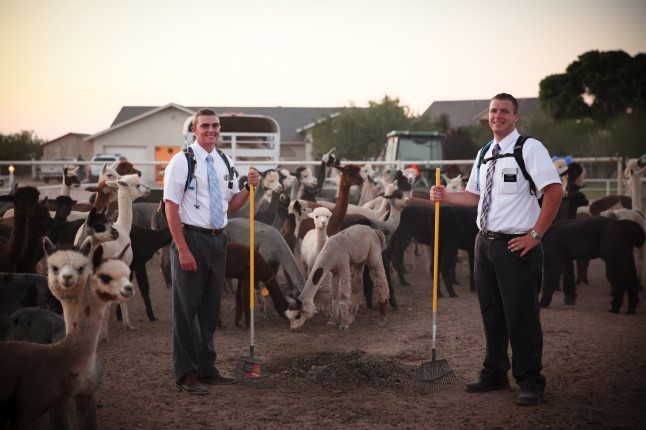
As the number of missionaries rose, so did the number of missionaries returning home early—mostly due to mental and physical health challenges. Recently, the Church announced a change to service missionary programs.
There were lots of changes, but the one I want to focus on is that missionaries who are unable to finish their proselyting mission will be able to continue their service as church service missionaries. They will live at home and get the care and resources they need, but they will also be able to continue serving the Lord.
The choice to go home early is hard for many missionaries, especially when those at home don’t understand the reasons and are unsupportive. This new program lets the missionaries continue to serve people (they even get to keep wearing the name badge!) and feel the joy of knowing that they are where the Lord wants them to be.
So What?
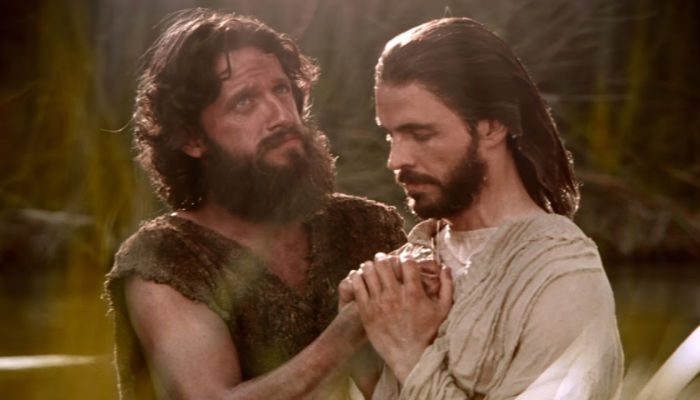
As I look at the changes to missionary service in the time that I have been home, I realize that nothing important has changed. The doctrine remains clear: missionaries go out and teach the gospel of repentance. They invite others to accept the gospel and be baptized. Plain and simple. Only the tools for this service has changed. So I hope all those pants-wearing, smartphone-using, missionaries out there are able to utilize the new tools they have been given to bring their message to the people.
How have recent changes in missionary work affected you or missionaries you know? Let us know in the comments.


